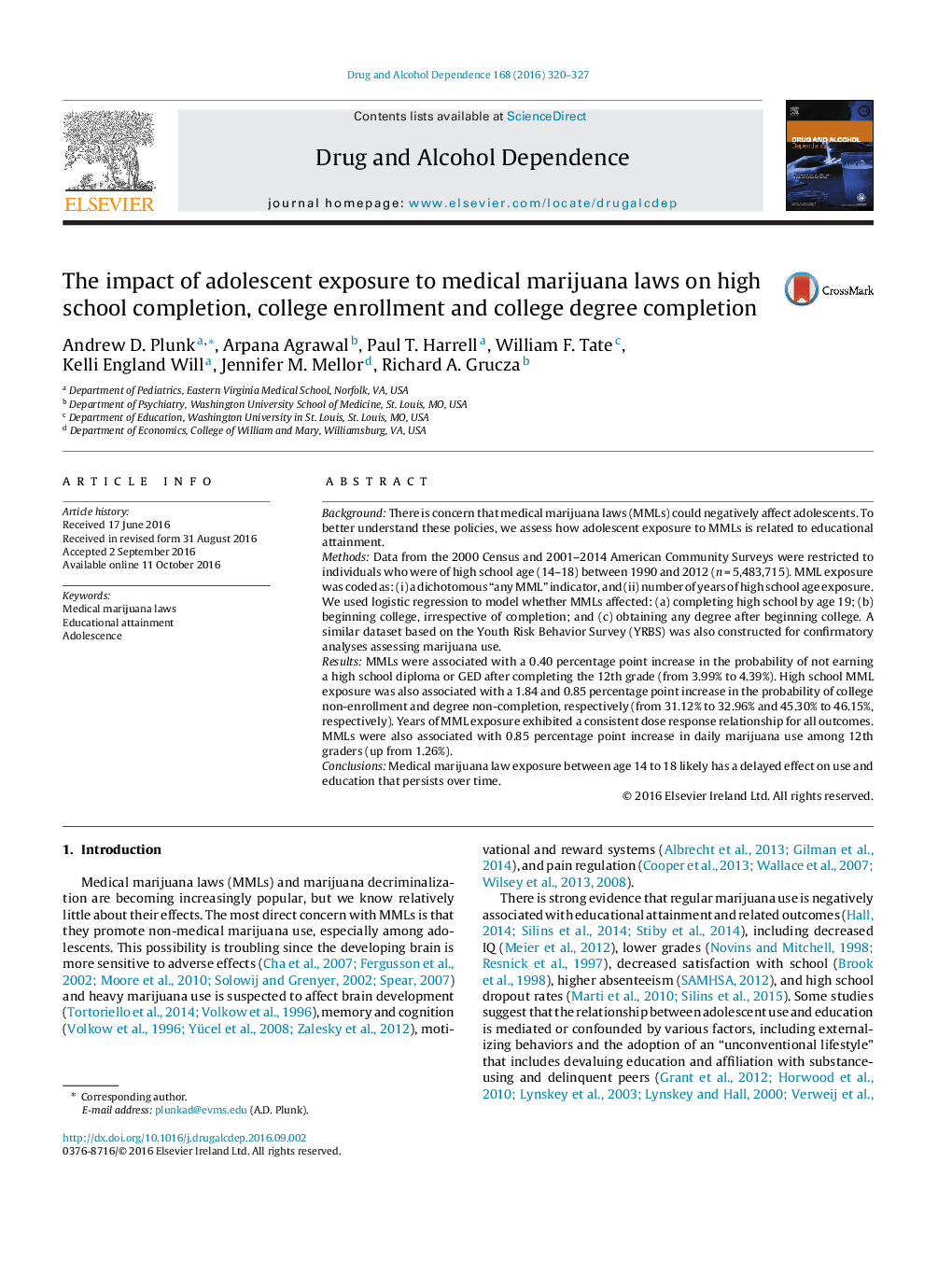| کد مقاله | کد نشریه | سال انتشار | مقاله انگلیسی | نسخه تمام متن |
|---|---|---|---|---|
| 5120475 | 1486123 | 2016 | 8 صفحه PDF | دانلود رایگان |
- We measured the impact of high school age exposure to medical marijuana laws (MMLs).
- MMLs were associated with decreased high school and college educational attainment.
- Education results suggested that MMLs could have a delayed effect on marijuana use.
- We identified a marijuana use outcome that plausibly explains this relationship.
- There was no evidence that existing state characteristics explained our findings.
BackgroundThere is concern that medical marijuana laws (MMLs) could negatively affect adolescents. To better understand these policies, we assess how adolescent exposure to MMLs is related to educational attainment.MethodsData from the 2000 Census and 2001-2014 American Community Surveys were restricted to individuals who were of high school age (14-18) between 1990 and 2012 (n = 5,483,715). MML exposure was coded as: (i) a dichotomous “any MML” indicator, and (ii) number of years of high school age exposure. We used logistic regression to model whether MMLs affected: (a) completing high school by age 19; (b) beginning college, irrespective of completion; and (c) obtaining any degree after beginning college. A similar dataset based on the Youth Risk Behavior Survey (YRBS) was also constructed for confirmatory analyses assessing marijuana use.ResultsMMLs were associated with a 0.40 percentage point increase in the probability of not earning a high school diploma or GED after completing the 12th grade (from 3.99% to 4.39%). High school MML exposure was also associated with a 1.84 and 0.85 percentage point increase in the probability of college non-enrollment and degree non-completion, respectively (from 31.12% to 32.96% and 45.30% to 46.15%, respectively). Years of MML exposure exhibited a consistent dose response relationship for all outcomes. MMLs were also associated with 0.85 percentage point increase in daily marijuana use among 12th graders (up from 1.26%).ConclusionsMedical marijuana law exposure between age 14 to 18 likely has a delayed effect on use and education that persists over time.
Journal: Drug and Alcohol Dependence - Volume 168, 1 November 2016, Pages 320-327
